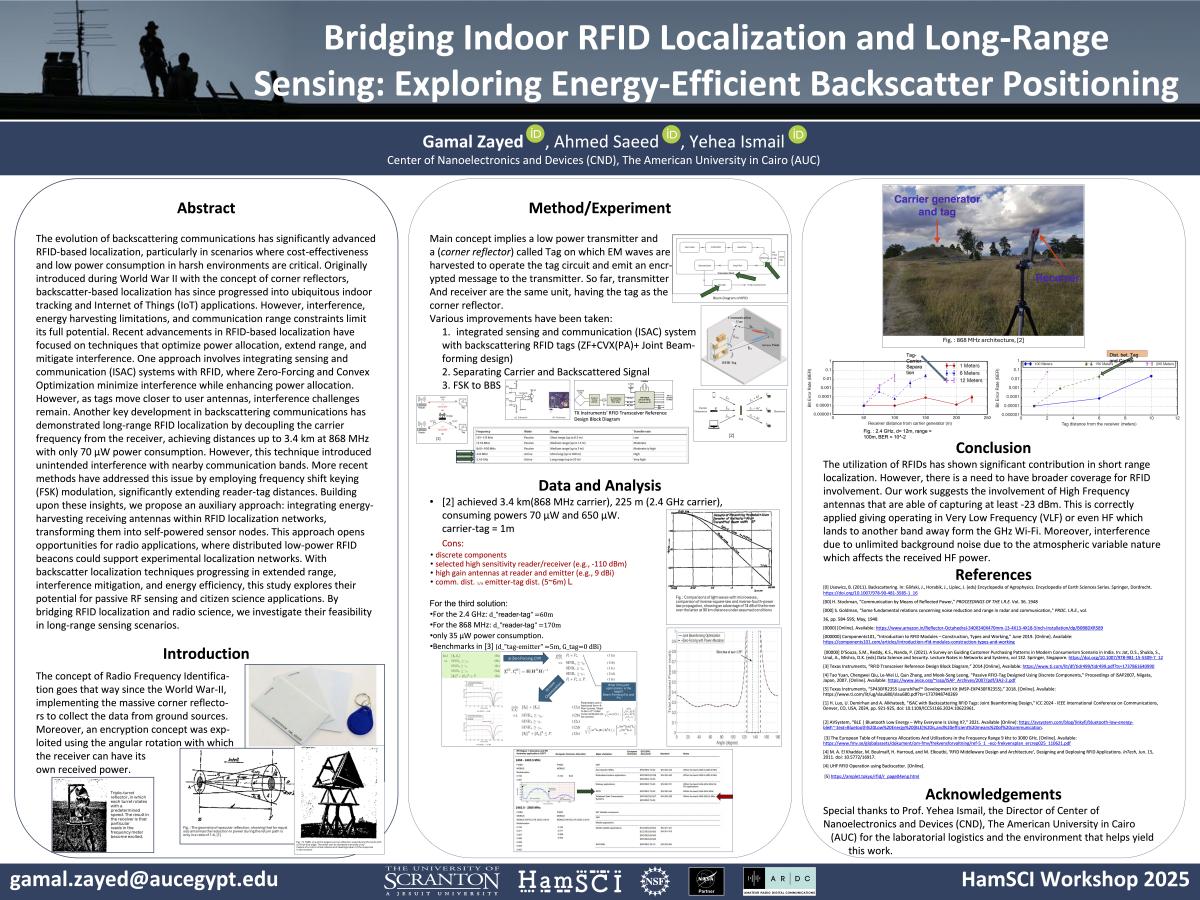| Title | Bridging Indoor RFID Localization and Long-Range Sensing: Exploring Energy-Efficient Backscatter Positioning |
| Publication Type | Conference Proceedings |
| Year of Conference | 2025 |
| Authors | Zayed, G, Saeed, A, Ismail, Y |
| Conference Name | HamSCI Workshop 2025 |
| Date Published | 03/2025 |
| Publisher | HamSCI |
| Conference Location | Newark, NJ |
| Abstract | The evolution of backscattering communications has significantly advanced RFID-based localization, particularly in scenarios where cost-effectiveness and low power consumption in harsh environments are critical. Originally introduced during World War II with the concept of corner reflectors, backscatter-based localization has since progressed into ubiquitous indoor tracking and Internet of Things (IoT) applications. However, interference, energy harvesting limitations, and communication range constraints limit its full potential. Recent advancements in RFID-based localization have focused on techniques that optimize power allocation, extend range, and mitigate interference. One approach involves integrating sensing and communication (ISAC) systems with RFID, where Zero-Forcing and Convex Optimization minimize interference while enhancing power allocation. However, as tags move closer to user antennas, interference challenges remain. Another key development in backscattering communications has demonstrated long-range RFID localization by decoupling the carrier frequency from the receiver, achieving distances up to 3.4 km at 868 MHz with only 70 μW power consumption. However, this technique introduced unintended interference with nearby communication bands. More recent methods have addressed this issue by employing frequency shift keying (FSK) modulation, significantly extending reader-tag distances. Building upon these insights, we propose an auxiliary approach: integrating energy-harvesting receiving antennas within RFID localization networks, transforming them into self-powered sensor nodes. This approach opens opportunities for radio applications, where distributed low-power RFID beacons could support experimental localization networks. With backscatter localization techniques progressing in extended range, interference mitigation, and energy efficiency, this study explores their potential for passive RF sensing and citizen science applications. By bridging RFID localization and radio science, we investigate their feasibility in long-range sensing scenarios. |
| Refereed Designation | Non-Refereed |
| Full Text |

